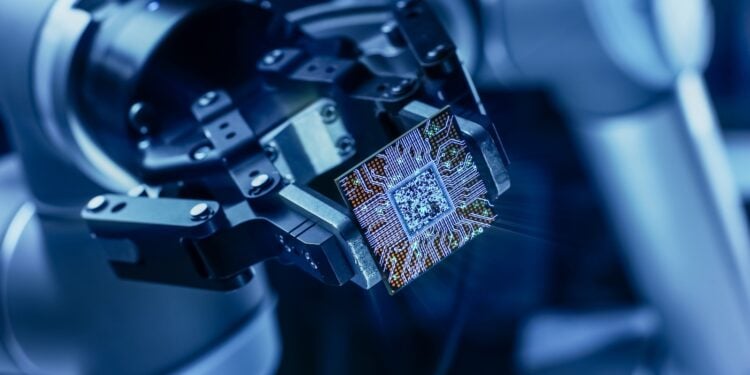The iPhone 18 will be equipped with a new processor that marks a major technological leap: the A20 chip. This will be manufactured for the first time using the 2-nanometer process, providing Apple with a further performance boost. However, manufacturing is expensive. Manufacturing partner TSMC expects significantly higher production costs—according to recent reports, at least 50 percent more than with the current 3-nanometer process. Nevertheless, it is considered unlikely that Apple will pass the increased costs on to the sales price.
Chip manufacturing is reaching a new level with the iPhone 18. Apple is once again leveraging cutting-edge technology to increase the performance and efficiency of its smartphones. But this progress comes at a price. It has been known since 2024 that TSMC is working on a new 2nm processor intended for the iPhone 18. As it now turns out, manufacturing costs will be significantly higher than previously thought.
TSMC faces massive additional costs
According to the Chinese business newspaper China Times, TSMC will have to spend around 50 percent more on producing the 2-nanometer chip. This is due not only to rising material prices, but primarily to the enormous investment costs for the new manufacturing technology. The 2-nm process is so complex that the yield, i.e., the proportion of functioning chips per production batch, has only now risen to an acceptable level.
Even the purchasing power of a company like Apple isn't enough to significantly lower prices. TSMC is investing billions in new facilities and infrastructure to even be able to implement the new technology. Accordingly, there's little room for discounts.
Chip costs are rising – but Apple can handle them
Even if the manufacturing costs of the A20 chip increase, the impact on the final price of the iPhone 18 is rather small. By comparison, the A18 processor in the iPhone 16 cost approximately $45 in October 2024, according to a report by Digitimes. Total material costs for the iPhone 16 were estimated at around $416 at the time. The processor thus accounted for approximately 10 percent of the total costs and approximately 5.6 percent of the $799 retail price.
Even if the new A20 chip were to become half as expensive, its share of the total cost would increase only minimally. At around $67, the processor would still not be a dominant cost factor. Components like the rear camera, which is now the largest single item in production, are much more expensive for Apple.
Why Apple probably won't pass on the higher costs
Apple has proven repeatedly in the past that rising production costs don't necessarily lead to higher final prices. The company usually offsets additional costs internally, for example through increased production efficiency or a better distribution of development costs across multiple device generations. This time, too, there is much to suggest that Apple will cover the additional costs of the 2nm chip itself.
This approach has strategic reasons. A stable price secures the iPhone series' position in the market and reinforces the perception of it as a premium product without price fluctuations. Especially in a competitive smartphone market, price stability is an important factor for customer trust.
The technological leap: 2 nanometers
The 2-nanometer manufacturing process offers decisive advantages. Smaller structures mean more transistors can be accommodated in the same area. This makes the chip not only faster but also more energy-efficient. The iPhone 18 is therefore likely to offer noticeably better performance and longer battery life than its predecessors.
Analyst Ming-Chi Kuo had previously reported that TSMC had now achieved a yield of over 70 percent in 2nm production. This would be a very good figure, since in early production phases, often only around 30 percent of the chips are fully functional. Kuo thus contradicted earlier estimates that the yield was still too low.
Which models will get the A20 chip
Originally, it was expected that only the Pro models of the iPhone 18 would be equipped with the new A20 processor. Due to the high costs and the still-young manufacturing technology, it seemed logical to limit the new chips to the premium variants.
However, this is now considered outdated. According to Kuo, the entire iPhone 18 series will receive the new A20 processor – both the standard and Pro models. This would mean that Apple will consistently introduce the new 2nm technology across all models to create a consistent performance base and expand its technological lead over other manufacturers.
Other price factors for the iPhone 18
In addition to the processor, prices for other components are also rising. The China Times report points out that memory modules and other smartphone components are also becoming more expensive. While exact figures are not available, the trend shows that overall material costs are rising. Nevertheless, the processor is not considered the biggest cost driver for the iPhone 18.
Looking at previous models, Apple typically keeps its pricing structure constant, even when internal costs increase. The iPhone 16, for example, maintained its starting price of $799 despite rising component prices.
More performance, same prices: Apple's strategy for the iPhone 18
The A20 chip in the iPhone 18 will be significantly more expensive for Apple, but customers are unlikely to notice much of the difference. According to current reports, the production of the new 2nm processor will incur costs around 50 percent higher, due to high investments and complex manufacturing. Nevertheless, the processor remains a manageable factor in relation to the device's overall cost. Apple is likely to offset the additional costs internally to keep selling prices stable. This continues the company's policy of implementing technological innovations without increasing prices. The new A20 chip will make the iPhone 18 faster and more efficient – demonstrating that progress is Apple's top priority, even if it is expensive. (Image: Shutterstock / Gorodenkoff)
- iPhone 2026 to 2028: Apple's radical design strategy
- iPad Fold: Apple's expensive future project with 18-inch display
- Apple internal: Doubts about Siri performance under iOS 26.4
- iPhone Fold: Launch could be delayed until 2027
- Apple is working on M5 MacBook Air, Mac Studio and more
- Apple prepares major MacBook Pro redesign for 2026/2027
- iPhone 18 Pro gets camera with variable aperture for the first time
- Apple plans Smart Home Hub with display – launch in spring 2026
- iPhone Fold: Apple's hinge could be cheaper than expected
- Apple develops AR glasses with two modes and visionOS system
- Apple develops H3 chip and prepares new AirPods models
- iOS 26.0.2 coming soon – Apple prepares another update
- Apple is working on glasses – AR experience comes with successor model
- Apple Health+: New subscription service could launch in 2026
- iPhone Fold: Titanium meets aluminum in a new design
- Apple is close to an agreement with Formula 1
- Jony Ive and OpenAI: Three problems slow down AI hardware
- iPad mini 8: Rumors, technical features & release date
- Apple is working on glasses – AR experience comes with successor model
- Apple launches reorganization: New head of AI sought
- Apple pursues rare strategy in launching smart glasses
- Apple plans AI smart glasses and stops Vision Air development





